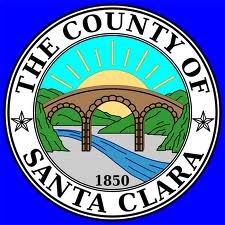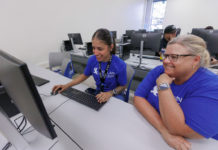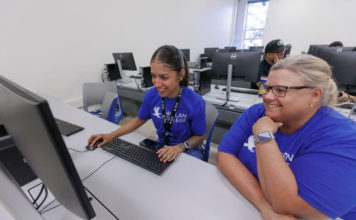A lengthy report by county planning staff recommends the approval of the Cordoba Center mosque and community center project in San Martin, and might put to rest the many worries and questions that residents have submitted in response to the proposal.
The project proposed by the South Valley Islamic Community will be presented to the Santa Clara County planning commission for discussion and potential approval at the body’s regular meeting Thursday.
That meeting will follow two meetings by planning advisory commissions on Tuesday and Wednesday that are expected to draw large crowds of residents seeking more information about the project, according to members of those commissions.
County planning staff presented a list of conditions for approval last week. Those conditions include a strict adherence to the plans presented to their offices by the SVIC in December 2011, further approval of building materials when construction time approaches, no food or beverage sales, restricted operating hours, no overnight accommodations, a maximum daily capacity of 80 people, or 150 people for special events up to three times per year.
The project is proposed on a 15-acre parcel on the 14000 block of Monterey Highway, just north of the intersection of California Avenue. The proposal consists of two ranch-style buildings – a 5,000-square-foot prayer hall and a 2,800-square-foot multipurpose building – as well as an outdoor play area that includes picnic grounds and two restroom structures. The cemetery is planned to occupy about two acres of the space.
In response to more than 40 letters and e-mails with questions about the project submitted to the county by area residents as part of the public review period preceding the project’s approval, county staff said the project will have no significant impact on water quality, traffic, noise, nearby waterways including Llagas Creek, agriculture or operations at the nearby San Martin Airport.
One of the most-repeated claims by residents opposed to the project – including several iterations in South Valley newspapers’ letters sections – is that soil percolation tests conducted in response to a residential project proposed at the site in 2006 failed. The implication, according to these residents, is that the soil is not suitable for septic systems or a cemetery as these uses could contaminate the groundwater basin beneath the property.
The county staff report says the 2006 project was a three-lot subdivision, and one of the lots failed the soil percolation test. However, that lot was downhill from where the Cordoba Center’s construction and cemetery are proposed.
Another study later that year, uphill from that lot but on the same parcel, showed that soil percolation rates were adequate for the proposed septic system and burial grounds, based on department of environmental health and Central Coast Regional Water Quality Control Board guidelines.
The Cordoba Center proposal says between 30 and 70 people will attend the site for regular activities such as prayers and other religious services, as well as Sunday school. Daily services one month a year – during Ramadan – will draw about 30 people from 9:30 to 11 p.m.
In addition to the three special events expected each year – an open house and congregation gatherings – the proposal says the Cordoba Center will draw up to 80 people for weddings, funerals, Ramadan festivals, soup kitchens and retreats up to 30 times per year.
The county staff report does not list any conditions or restrictions for these events.
The SVIC, which represents a “core of about 80 active families,” drafted a press release this week in response to the growing criticism of the proposal, and urging the planning commission to approve the project.
The SVIC has also posted a petition on the Internet for people to sign in support of the project. As of Monday, the petition had 350 signatures, with a goal of 500 signatures.
“The Cordoba Center, named after the multi-cultural medieval city of Cordoba, Spain, will allow SVIC to better serve local families in this community,” the press release said.
SVIC members in recent weeks have said a lot of the criticism of the project includes “misinformation” about the proposal on record in county planning offices.
In response to the concern that the Cordoba Center might not meet the general plan’s “local serving” guidelines for non-residential structures, county staff said those provisions are intended to limit the size and minimize the impact of the project on the local area. The Cordoba Center meets that intent, even if it not primarily serving the residents of San Martin, and besides, the land use restriction cannot interfere with the applicant’s ability to practice their religion.
“If in the case of a religious institution…a proposal is consistent with the scale of similar established uses in the rural area, and (is) generally low intensity, it has been historically considered an allowable use consistent with the purpose and intent of these policies.”
The report cited the Vo UU Buddhist Meditation Center, approved in 2009 on Church Avenue in San Martin, as a local precedent.
Most members of the SVIC are not residents of San Martin, and hail from throughout the South Santa Clara Valley area.
- San Martin Planning Advisory Committee, July 31, 7 to 9 p.m. at the Morgan Hill Grange Hall, 40 E. Fourth St., Morgan Hill
- South County Joint Planning Advisory Committee, Aug. 1, 7 p.m. at the Morgan Hill Community and Cultural Center, 17000 Monterey St., Morgan Hill
- Santa Clara County Planning Commission, Aug. 2, 1:30 p.m. at the county government center, 70 W. Hedding St., First floor, Isaac Newton Senter Auditorium, San Jose















